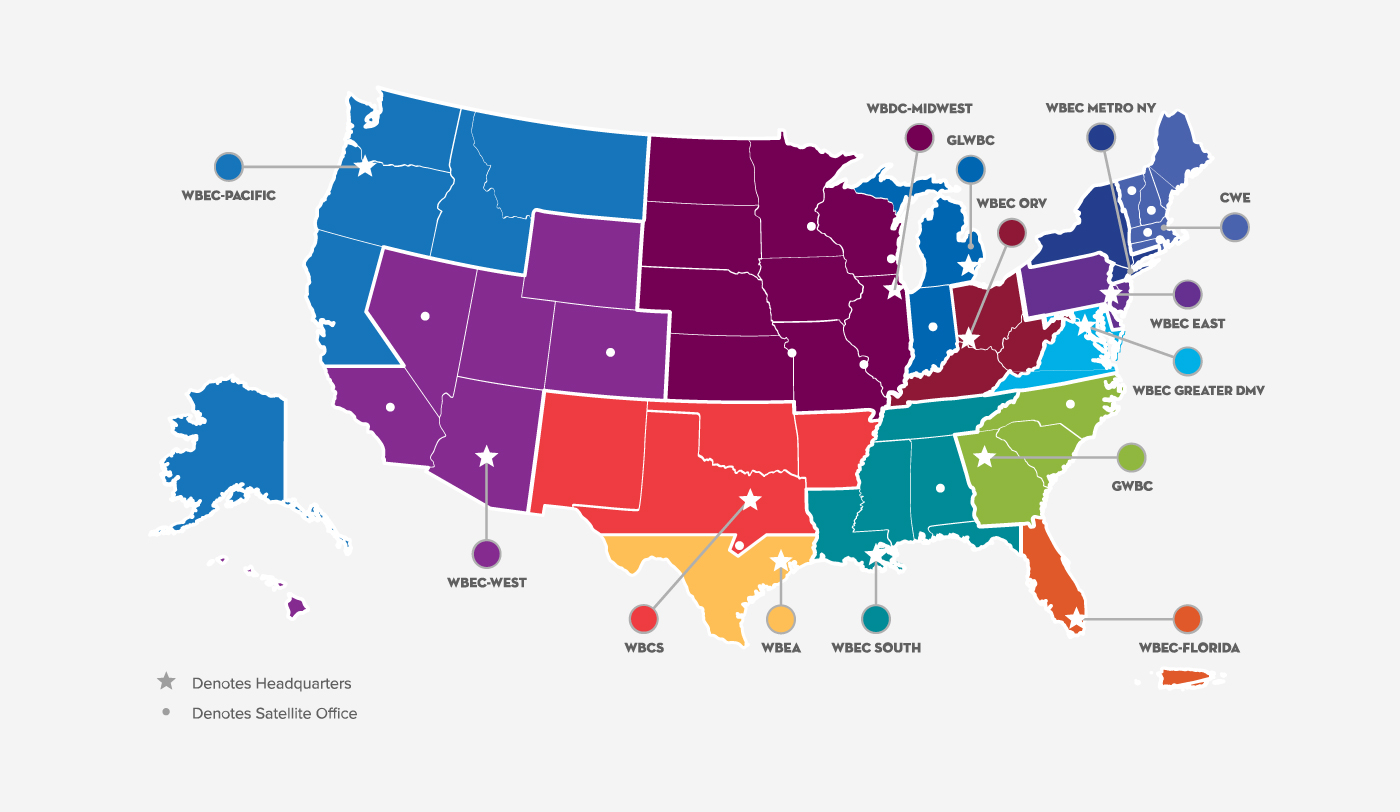This month, WBENC is celebrating National Women’s Small Business Month to recognize the growth and accomplishments of female entrepreneurs and the vital role they play in our economy, while also calling on the public to support women and #BuyWomenOwned.
Working with our network of more than 15,000 certified women-owned businesses and the hundreds of Fortune 500 companies and government entities who do business with them, we hear amazing stories of growth and success every single day. But we also hear about some of the challenges and obstacles facing women entrepreneurs, and a critical part of our mission is to provide the opportunities and resources to help women overcome those barriers in order to develop, grow, and succeed.
Both the incredible success and persistent challenges faced by women entrepreneurs were evident in two recent reports covering women-owned businesses: the 2018 State of Women-Owned Business Report by American Express, and SCORE’s Megaphone of Main Street: Women’s Entrepreneurship, Spring 2018 report.
We dug into both reports to analyze the state of women-owned businesses and glean some insights into the patterns of growth, what it means for women-owned businesses of today, and what it means for the next generation of female entrepreneurs.
Growth
- As of 2018, there are 12.3 million women-owned businesses in the U.S. Compare that to 1972, when there were only 402,000 women-owned businesses, representing 4.6 percent of all firms.
- Women own 4 out of every 10 businesses in the U.S.
- Since 2007, the number of women-owned businesses has increased by 58 percent, which is better than businesses overall, which increased by only 12 percent.
- Last year, 1,821 net new women-owned businesses were launched every day. Women of color founded 64 percent of those new businesses.
- Women are slightly more likely to start a business than men, according to the SCORE report.
Behind the numbers: The American Express report notes that it was a combination of necessity entrepreneurship and opportunity entrepreneurship driving much of the more recent growth. Necessity entrepreneurs are individuals who cannot find quality employment and typically return to the workforce when the economy improves. The report says, “From 2007 to 2018, higher unemployment rates, longterm unemployment and a much greater gender and racial pay gap led women of color to start businesses at a higher rate out of necessity and the need to survive, rather than a desire to seize a market opportunity.”
Economic Impact
- Women-owned businesses employ 9.2 million people. (Note, this is just 8% of the total private sector workforce.)
- Women-owned businesses generate $1.8 trillion revenue. (Note, this is just 4.3% of the total private sector revenue.)
- From 2007 – 2018, total employment by women-owned businesses rose 21%, while employment for all businesses declined by 0.8%.
Behind the numbers: While total number of women-owned business has grown and women are overall employing more and more people, the share of revenue and workforce when you look at all businesses is not keeping up. From 2007 – 2018, total employment share increased from 6 to 8 percent, while revenue share increased from 4 to 4.3 percent. More needs to be done to ensure women-owned businesses are not only growing in number, but are contributing a larger piece of the economic pie.
Driving the Growth: Women of Color
- In 2018, women of color account for 47% of all women-owned businesses, employ 2.2 million people and generate $386.6 billion in revenues.
- Businesses owned by women of color grew by 163% between 2007 and 2018.
Behind the numbers: There is a revenue gap between businesses owned by women of color and those owned by non-minority women. According to the American Express report, $1.2 trillion more in revenues and 4 million new jobs could be added to the U.S. economy if minority owned firm revenue matched those currently generated by all women-owned businesses.
Financing & Revenue
- 62% of women entrepreneurs depend on their business as their primary source of income.
- 25% of women were likely to seek financing for their business, compared to 34% of male entrepreneurs. More women use credit cards, while more men use equity investors.
- 88% of women-owned businesses generate less than $100,000 in revenue. This group is growing at a rate that is faster than the growth rate for larger women-owned companies.
- 1.7% of women-owned businesses generated more than $1 million in revenue, an increase of 46% over the past 11 years compared to 12% for businesses overall. These firms represent 68% of total employment for all women-owned businesses and 69% of total revenues.
Behind the numbers: The American Express report notes the outsized contribution $1 million+ women-owned businesses make to the economy and how supporting women-owned businesses to reach this threshold could have a huge impact. The report states: “Growth in both employment and revenues begins to take off for women-owned businesses when they reach $250,000 in revenues. Supporting businesses on the cusp of crossing this threshold ($100,000 to $249,999) — and those that have crossed it — could accelerate the growth of larger women-owned businesses.”
Industries
- Half of women-owned businesses are concentrated in three industries: other services, health care and social assistance, and professional/scientific/technical services.
- Women are significantly more likely to launch businesses within the healthcare (10%) or education sectors (9%) than men (5% in both cases). In contrast, men are significantly more likely to start businesses in the construction and manufacturing industries (12%) than women (4%).
- Women-owned businesses employ the most people in healthcare and social assistance (20%), accommodations and food services (16% ) and administrative, support and waste management services (13%).
- Women-owned businesses have the highest total revenue in wholesale trade (17%), retail trade (15%) and professional, scientific and technical services (10%).
- Industries with the highest growth rates in terms of number of women-owned businesses include utilities (151% growth), other services (126%), construction (94%), accommodations and food services (85%), and administrative, support and waste management services (70%).
Behind the numbers: Necessity and flexibility entrepreneurs drove a dramatic rise in “other services” businesses, which includes salons, pet care, and other similar types of businesses. This category more than doubled between 2007 and 2018, and now accounts for 23% of all women-owned businesses. These businesses generated less revenue per firm than women-owned businesses overall.






